Bleecker Street from LaGuardia Place to 6th Avenue
Bleecker Street forms the spine of this section of the South Village, and much of this historic neighborhood's story, both architecturally and historically, can be told from these few blocks.
Bleecker Street was one of the prime commercial streets of the Italian-American South Village, and vestiges remain in the Italian cafes, coffee shops, and even funeral homes on this street. Coffeehouses in the area became a center of the bohemian life of the Village in the 1920's, and speakeasies were numerous here and on the side streets during Prohibition. Music venues proliferated in the 1950's and 60's, and the area played a significant role as home to New York's folk music revival of this era (several venues remain on this stretch of Bleecker Street and on sidestreets). This part of Bleecker Street was also a center of Off-Broadway and experimental theater, with Art D'Lugoff's Village Gate at 160 (now a chain drug store, but the sign remains -- see picture below), the Bleecker Street Playhouse at 146, and the former Circle in the Square Theater at 159 Bleecker Street. Sadly, all are now defunct, and the Circle in the Square building is for sale, prompting fears this historic building might be torn down.
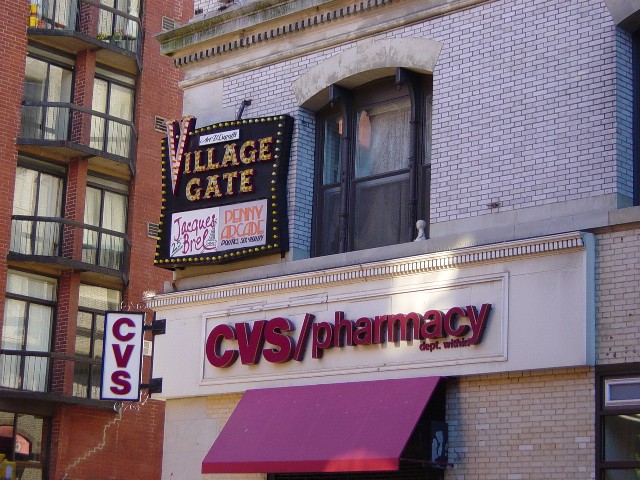
Though barely recognizable as such now, 146 (see below) was a pair of 1830's rowhouses until a 1920 conversion by then little-known architect Raymond Hood (who later designed the Chicago Tribune Tower, the Daily News Building, the McGraw Hill Building, and Rockefeller Center).
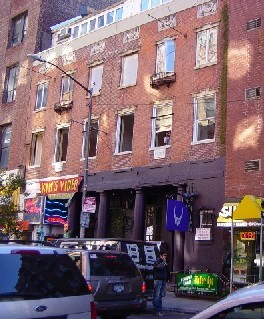
The conversion was originally done to house an Italian restaurant. Both sides of this block of Bleecker Street (between LaGuardia and Thompson Streets) had rows of red brick houses like what 146 once looked like. 145 and 149 (built in 1832 -- pictured below) which are substantially intact, show the best evidence of what the row looked like. 147 once looked just like them, but has had its dormers removed and an additional story added. This block was once known as Caroll Place.
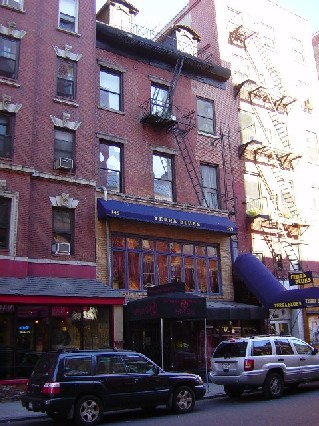
149 Bleecker Street
In addition to several handsome and typical tenements, the street boasts several early 19th century rowhouses in varying states of alteration, and one enormous, and formerly notorious, monumental building. The building now known as the Atrium at 160 Bleecker Street (below) was built in 1896 by renowned architect Ernest Flagg. Originally called Mill's House No.1, it was a men's hostel with 1500 tiny bedrooms facing either the street or large interior courtyards.
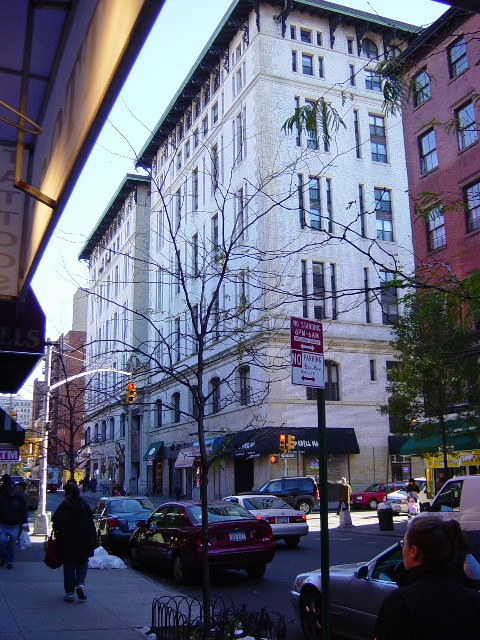
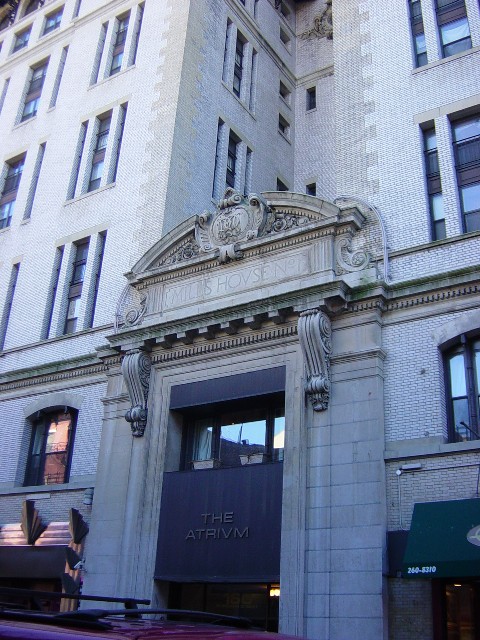
By the 1960's it came to be known as the Greenwich, and was a seedy hotel which was generally considered a source of crime and drug activity in the neighborhood. In 1976 it was converted to upscale apartments, and the interior courtyards have been skylighted over (hence the 'Atrium').
The row of buildings on the south side of Bleecker Street between MacDougal and Sullivan (170-186) were actually once a unified row of Greek Revival rowhouses built in 1861 (note that virtually all of the windows line up ' evidence of their original form and composition as a single row of houses built in tandem); most have since had stories or lofts added above, and some new pediments installed (in geometric styles, typical of the 1920's).
Bleecker Street was named for Anthony Bleecker, an early 19th century Greenwich Village literatus, whose family's farm the street ran through.
Click here to return to main tour page
If you want to support GVSHP and its efforts to preserve the South Village, CLICK HERE.
If you want to be kept informed of the South Village preservation campaign, email:
SouthVillage@gvshp.org. Be sure to include your name, address and phone number.
Did you or your family live, work, or have a business in the South Village? If you have stories, pictures, or information about the history of the South Village, please share it with us. CLICK HERE for email, or you can write to us at GVSHP, 232 E. 11th Street, New York, NY 10003, or call 212-475-9585.